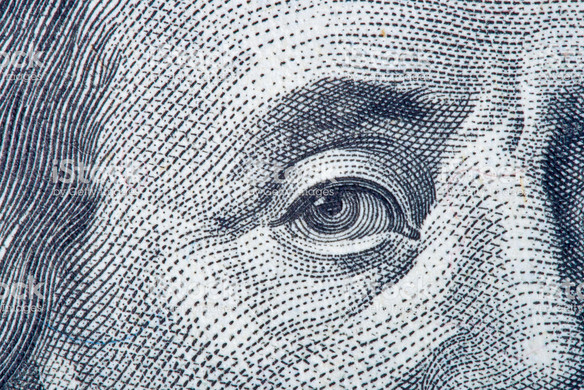Table of contents
One of the most intriguing and recognizable aspects of the United States of America is its currency. The dollar bill especially holds keys to the country’s story. With its unique look and esoteric symbolism, the dollar bill could even be considered a legitimate work of art. The origin and subsequent modifications of the first dollar bill offer an interesting look into the history of a burgeoning sovereign nation. A simple examination of early currency, including dollar bills and silver certificates, can help history buffs and inquisitive consumers understand the social, political, and financial trajectory of a nation intent on supporting itself.
The First Dollar Bill
The path toward adopting the dollar bill was one that was littered with obstacles. While the government was keen to incorporate paper money into its currency system, the public was skeptical and didn’t initially trust that paper could be just as valuable as traditional silver and gold. Eventually, paper currency became successful, at least in part due to war efforts. As the government saw an increased need to finance the Civil War, they began issuing paper notes, which could be instantly traded for coins when requested. The existence of these notes and their introduction into society is what paved the way toward the modern currency system we enjoy today, including notes that are worth different different denominations. Salmon P. Chase graced the front of the first dollar bill, which was issued in 1862. As the treasury secretary under President Abraham Lincoln, he was a fitting choice to usher in this new and modern type of paper currency.
Designs and Symbols on the Dollar Bill
The first dollar bill’s design was notable for its distinct look. Its large size, portrait of Chase, and prominent designs gave it an appearance that mirrored modern bank checks. While current dollar bills have a treasury seal printed with green ink, the original seal was printed in red. Thirty-four spikes around the seal were intended to symbolize the 34 states of the Union at the time. Phrases were incorporated into paper money in both English and Latin. As the nation grew older, more modifications to the dollar bill’s design were made, including the later adoption of the “In God We Trust” motto.
- The Real Meaning and Significance of the Great Seal of the United States
- Symbols on American Money
- The Legislation Placing “In God We Trust” on National Currency
- History of “In God We Trust”
Changes in the Dollar Bill
The year of 1869 ushered in a new era of the dollar bill, as it was redesigned and incorporated one of its most recognizable features: a portrait of George Washington. In order to compensate for rising manufacturing costs, the government decided in 1929 to reduce the size of the dollar bill by approximately 30 percent. In 1990, the government began to invest in security features, including polyester threads and microprinting, on paper currency in an attempt to curb counterfeiting. Interestingly, the general look of the note is dictated by law.
- The Anatomy of U.S. Dollars: Comparing Styles, Note Identifiers, and Security Features (PDF)
- Understanding the Design and Symbolism of the U.S. One-Dollar Bill
- Design of New Currency
Silver Certificates
As a tactic to try and convince Americans to use paper money instead of coins, silver certificates were issued in 1878. Silver certificates were intended to replace the use of silver coins in everyday transactions and came in varying denominations from $1 to $1,000. As the primary type of currency used in American society at that time, silver certificates became popular and well-known even among circles of skeptical individuals who preferred using traditional hard and weighty coins due to their convenience and the inherent value of the precious metal they contained. Though initial pressings of silver certificates were worth at least $10, the first dollar version of the silver certificate was introduced in 1886 and featured Martha Washington, the wife of George Washington, on its face. Until 1968, silver certificates could be redeemed for their value in silver with the U.S. Treasury. Fluctuations in silver prices in the mid-20th century resulted in Congress discontinuing silver certificates as well as the use of silver in coinage.
- Silver Certificates
- The Last Metal Standard: Silver Certificates
- Bureau of Engraving and Printing’s Silver Certificates Fact Sheet (PDF)
- Two-Dollar Silver Certificate
![]()











